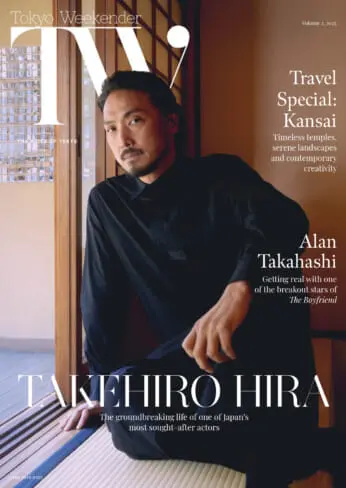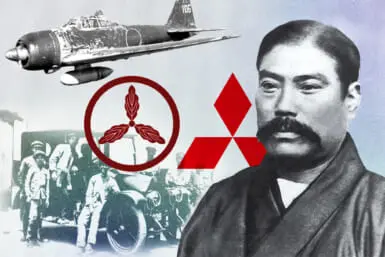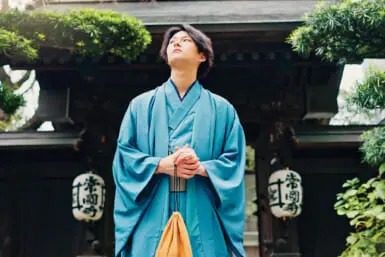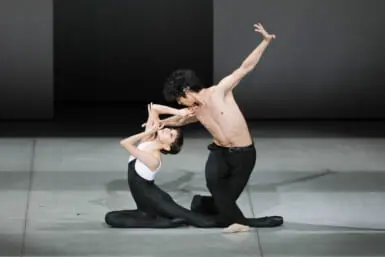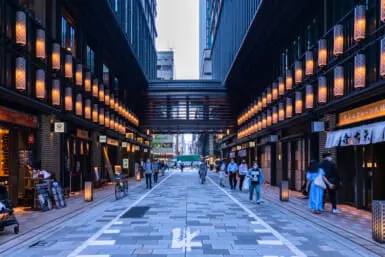In the hit anime series Demon Slayer: Kimetsu no Yaiba, the titular “demon” (oni in Japanese) refers to supernatural monsters that were all created by a single king, feast on humans and die when exposed to sunlight. You might not be surprised to learn that that’s not exactly how oni are portrayed in Japanese mythology. But then again, the legends and stories of oni are so multifaceted and sometimes even contradictory that Demon Slayer’s contribution to the folklore is but a drop in the bucket. Here’s what else you will find inside that pail.
A ‘Demon’ by Any Other Name, Shape, or Number of Eyes
“Oni” can be translated into English as “demon,” “devil,” “ogre,” “troll,” “brute,” or even “maniac” in its modern, more figurative usage. They are traditionally portrayed as horned giants with sharp teeth, tiger-skin loincloths and iron maces. They come in a variety of colors that, in some interpretations, represent various sins and human foibles.
Red oni are said to embody greed, blue ones are stand-ins for anger, yellow demons are the poster boys for naivety and attachment (showing their Buddhist influence), green oni are lazy and black-colored ones are doubtful. But things were not always so conveniently color-coded.
The Chinese character for oni essentially means “a ghost,” or “a formless spirit.” The Japanese word oni, though, refers to corporeal beings but ones that are hard if not impossible to perceive, since their name is reportedly a corruption of “on” and “onu,” meaning “to hide.” This makes sense since oni were originally thought to be the sources of natural disasters, which didn’t have an obvious cause.
So, when people of old Japan were faced with plagues, droughts, or famine, they looked around for the culprit, saw nothing, then named that malicious nothing “the hidden ones,” also known as “oni.” Over time, however, they let their imagination fly and envisioned oni as anything from armed ogres to 50-foot-tall horned devils with 15 eyes like the famous oni, Shuten-doji. Then again, many oni can also shapeshift, so Demon Slayer isn’t exactly breaking with any tradition by having, say, a villain shaped like a grotesque snake-man with mouths for eyes.
Where the Hell Did Oni Come From?
If you want to get snarky, a technically correct answer to where oni came from is “the northeast.” According to Japan’s techno-wizards, the northeast direction from which evil arrives is called “the demon’s gate” or the “Ox-Tiger” direction, based on the Chinese Zodiac. The latter supposedly explains why oni have long been portrayed with ox horns and wearing tiger-skin loincloths. Mythological explanations for oni range from “they’ve always existed” to “they’re cursed humans,” “they’re cursed souls,” or “they’re the offspring of the goddess Izanami, the ruler of the land of the dead.”
Anthropological explanations for oni, like the one postulated by Professor Satoko Koyama of Nishogakusha University, say that legends about the creatures stemmed from demonizing outsiders, from the Emishi people of northeastern Japan to rakshasa demigods of Hindu mythology, which are said to have inspired stories of the island of Onigashima that features prominently in the legend of the folk hero Momotaro. It’s a place you can still visit today.
Oni Are Like Onions — They Have Layers
Momotaro didn’t exactly visit the island for its pristine beaches and hiking trails. He went there to slay monsters who swallowed humans in one gulp. This was called the onihitokuchi. A lot of artworks also depict them as wardens of hell who boil, skin, roast and generally torment sinners for all eternity.
There’s also the whole thing about how the word oni has long been used to describe anything monstrous or scary, like giant bovine spiders (ushi-oni) and even vampires, the Japanese name for which literally translates to “blood-sucking oni” (Kyuketsuki). There is, though, another side to oni.
Throughout history, many Japanese people have tried to harness the power of oni by treating them like other kami. Even supposedly “good” Japanese deities, such as Susanoo, the god of the sea and storms, could be bastards from time to time, so it stood to reason that “evil” supernatural creatures could be persuaded to help you out from time to time.
Some places in Tottori Prefecture worship oni for their strength as village protectors, while Aichi Prefecture is famous for its oni-faced roof tiles (onigawara), said to ward off evil, not unlike European gargoyles. Then there’s Tsugaru in Aomori Prefecture, home to “oniko torii” gates at Shinto shrines, which are supported by colorful statues of demons meant to drive away malevolent forces.
The best part of trying to get Japanese devils on your side is that if it doesn’t work out, you can apparently scare them off by simply cooking lunch, as oni are said to be repulsed by the smoke and odor of roasted sardines. Maybe that will be how they kill the Demon King in Demon Slayer.
